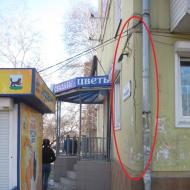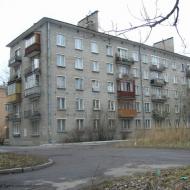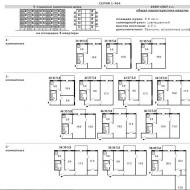
Accounting for other income and expenses of the organization. Accounting for other income and other expenses Other income and expenses in brief
Income and expenses, the implementation of which is not related to the subject of the organization's activities, are considered other income and expenses.
Other income are:
1) receipts related to the provision for a fee for temporary use (temporary possession and use) of the organization's assets;
2) receipts related to the provision for a fee of rights arising from patents for inventions and other types of intellectual property;
3) income related to participation in authorized capital other organizations (including interest and other income from securities);
4) profit received by the organization as a result of joint activities (under a simple partnership agreement);
5) proceeds from the sale of fixed assets and other assets other than Money(except foreign currency), products, goods;
6) interest received for the provision of funds for use by the organization, as well as interest for the use by the bank of funds that are on the account of the organization with this bank;
7) fines, penalties, forfeits for violation of the terms of contracts;
8) assets received free of charge, including under a gift agreement;
9) exchange rate differences, etc.
For purposes accounting the amount of other receipts is determined in the following order:
The amount of proceeds from the sale of fixed assets and other assets other than cash (except for foreign currency), products, goods, as well as the amount of interest received for the provision of funds for use by the organization, and income from participation in the authorized capital of other organizations (when is not the subject of the organization's activities).
Fines, penalties, forfeits for violations of the terms of contracts, as well as compensation for losses caused to the organization are taken into account in the amounts awarded by the court or recognized by the debtor.
Assets received free of charge are accepted for accounting at market value. Market price of the assets received free of charge is determined by the organization on the basis of the prices for this or a similar type of assets in force on the date of their acceptance for accounting. Data on prices in effect at the date of acceptance for accounting must be confirmed by documents or by means of an expert examination.
Other expenses are:
1) expenses associated with the provision for a fee for temporary use (temporary possession and use) of the organization's assets;
2) costs associated with the provision for a fee of rights arising from patents for inventions and other types of intellectual property;
3) expenses related to participation in the authorized capital of other organizations;
4) expenses associated with the sale, disposal and other write-off of fixed assets and other assets other than cash (except foreign currency), goods, products;
5) interest paid by the organization for the provision of funds (credits, loans) to it for use;
6) fines, penalties, forfeits for violation of the terms of contracts;
7) amounts accounts receivable for which the deadline has expired limitation period, other debts unrealistic for collection;
8) exchange rate differences, etc.
For accounting purposes, the amount of other expenses is determined in the following order.
The amount of expenses associated with the sale, disposal and other write-off of fixed assets and other assets other than cash (except foreign currency), goods, products, as well as with participation in the authorized capital of other organizations, with the provision for a fee for temporary use (temporary possession and use) of the organization's assets, rights arising from patents for inventions, industrial designs and other types of intellectual property (when this is not the subject of the organization's activities), interest paid by the organization for providing it with funds for use, as well as costs associated with payment for services rendered by credit institutions.
Fines, penalties, forfeits for violation of the terms of contracts, as well as compensation for losses caused by the organization are accepted for accounting in the amounts awarded by the court or recognized by the organization.
Income and expenses not related to the ordinary activities of the company are recorded in the account 91 "Other income and expenses".
In accounting, income (expenses) from the lease of property are referred to other income (expenses) of the firm, if the provision of property for rent is not the subject of the firm's activities.
The amount of rent due to the organization under the lease agreement is reflected in the accounting as follows:
Debit 76 (62) Credit 91/1- reflected income from property lease.
The costs associated with the provision of property for rent are reflected by posting:
Debit 91/2 Credit 02 (10, 70, 69 ...)- reflects the cost of renting property.
The amount of money that the organization received from buyers for the property of the company sold to them is reflected in the accounting as follows:
Debit 62 (76) Credit 91/1- income from the sale of property is taken into account.
At the same time, the residual value of the sold fixed assets is written off, intangible assets(actual cost of other property transferred to buyers):
Debit 91/2 Credit 01 (04, 03, 10, 58 ...)- the residual value of the property sold has been written off.
Then VAT is charged on the proceeds from the sale:
Debit 91/2 Credit 68 subaccount "Calculations for VAT" - VAT is charged on the proceeds from the sale of property.
All expenses associated with the sale of property are reflected in the debit of subaccount 91/2:
Debit 91/2 Credit 20 (23, 25 ...)- Expenses related to the sale of property are taken into account.
To account for cash, accounts payable or receivable in foreign currency, the entity must translate them into rubles.
For conversion, you need to use the official exchange rate in effect on the date of receipt of foreign exchange funds or acceptance for accounting of foreign exchange debt.
So, exchange rate differences are formed:
1) when recalculating funds in a foreign exchange account or currency at the cash desk - if on the date of the transaction with currency (the date of reporting), its rate has increased or decreased;
2) when recalculating accounts payable- if on the date of repayment of the debt (the date of reporting) the exchange rate was lower or higher than on the date of its occurrence;
3) when recalculating accounts receivable - if on the date of repayment of the debt (the date of reporting) the exchange rate was higher or lower than on the date of its occurrence.
The amount of positive exchange rate difference is credited to subaccount 91-1:
Debit 50 (52, 60, 62, 76 ...) Credit 91/1- the positive exchange rate difference is reflected.
The amount of negative exchange rate difference will be attributed to the debit of subaccount 91/2:
Debit 91/2 Credit 50 (52, 60, 62, 76 ...)- the negative exchange rate difference is reflected.
The amounts of penalties, fines, penalties, recognized or awarded by the court, accrued for violation of the terms of business contracts, are taken into account as follows:
Debit 91/2 Credit 76/2- accrued amounts of interest, fines, penalties for violation of the terms of business contracts.
Determination of the balance of other income and expenses at the end of the month
At the end of each month, the financial result (profit or loss) from other activities of the organization is determined.
This is done like this:
Balance of other income and expenses= The amount of other income (credit turnover for the reporting month on subaccount 91/1) - The amount of other expenses (debit turnover for the reporting month on subaccount 91/2)
If the amount of income exceeds the amount of expenses, then the organization has made a profit.
The amount of profit is reflected at the end of the month by posting:
Debit 91/9 Credit 99- reflected profit from other activities.
If the amount of income was less than the amount of expenses, then the organization received a loss.
The amount of the loss is reflected at the end of the month by posting:
Debit 99 Credit 91/9- reflected a loss from other types of activities.
Account 91 at the end of each month should not have a balance. However, sub-accounts 91/1 and 91/2 may have balances during the year, and their value will increase starting from January of the reporting year.
26. The concept and composition of non-current assets. Accounting for investments in fixed assets.
Fixed assets (Fixed capital) - fixed assets, fixed assets - the amount of capital invested in the aggregate of material objects and values used in the production process to influence the objects of labor and their transformation into consumable products.
Non-current assets participate in many production cycles, serve for a long time and transfer their value to the value of the goods produced with its help gradually, as they wear out through depreciation.
V the composition non-current assets distinguish between active and passive parts. TO active part non-current assets include machinery, equipment, vehicles directly involved in the processing, transformation and movement of objects of labor. The active part of non-current assets is the most mobile and dynamic, to the greatest extent influenced by scientific and technological progress.
TO passive part non-current assets include buildings and structures, the availability, composition and condition of which depend on working conditions, the functioning of machinery and equipment.
Accounting for non-current assets.
Check 08 "Investments in non-current assets"Is intended to summarize information about the costs of the organization in objects that will subsequently be taken into accounting as fixed assets, land plots and objects of nature use, intangible assets, as well as the costs of the organization for the formation of the main herd of productive and working livestock (except for poultry, fur-bearing animals, rabbits, families of bees, service dogs, experimental animals, which are accounted for in the composition of funds in circulation).
Sub-accounts can be opened for account 08 "Investments in non-current assets":
08-1 "Acquisition of Land Plots"; Subaccount 08-1 "Acquisition of land plots" takes into account the costs of acquiring land plots by the organization.
08-2 "Acquisition of objects of nature management"; Subaccount 08-2 "Acquisition of natural resource use objects" takes into account the costs of acquiring natural resource use objects by the organization.
08-3 "Construction of Fixed Assets"; Subaccount 08-3 "Construction of fixed assets" takes into account the costs of erection of buildings and structures, installation of equipment, the cost of equipment transferred for installation and other costs provided for by estimates, estimate and financial calculations and title lists for capital construction (regardless of whether is it construction by a contractor or in an economic way).
08-4 "Purchase of certain items of fixed assets"; Subaccount 08-4 "Acquisition of individual items of fixed assets" takes into account the cost of purchasing equipment, machinery, tools, inventory and other items of fixed assets that do not require installation.
08-5 "Purchase of intangible assets"; Subaccount 08-5 "Acquisition of intangible assets" takes into account the cost of acquiring intangible assets
08-6 "Transfer of young animals to the main herd"; Subaccount 08-6 "Transfer of young animals to the main herd" takes into account the costs of raising young productive and working cattle in the organization, which are transferred to the main herd.
08-7 "Purchase of adult animals"; Subaccount 08-7 "Purchase of adult animals" takes into account the cost of adult and draft animals purchased for the main herd or received free of charge, including the cost of its delivery.
08-8 "Performance of research, development and technological work" Subaccount 08-8 "Performance of research, development and technological work" takes into account the costs associated with the implementation of research, development and technological work ... and etc.
General principles accounting for investments in non-current assets
Investments in non-current assets (long-term investments) are understood to be the cost of creation. Increase in size, as well as the acquisition of non-current non-current assets not held for sale, with the exception of long-term financial investments.
Depending on which object will be taken into account as a result of investments. Attachments can be distinguished:
Fixed assets (including profitable investments in material values);
· Intangible assets;
· In research, development and technological work (R&D).
Synthetic accounting investments in non-current assets are kept on account 08 "Investments in non-current assets" according to the corresponding accounts.
Analytical accounting account 08 is maintained for each created or acquired item of fixed assets and intangible assets; on the costs associated with the formation of the main herd, by type of animals; for expenses related to the performance of R&D - by type of work, contracts (orders).
On the debit of account 08 reflects (accumulates) the organization's actual costs included in the initial cost of fixed assets, intangible assets and other assets.
On the credit of account 08 the generated initial cost of objects is written off after their acceptance for accounting (commissioning) into the debit of accounts 01 "Fixed assets", 04 "Intangible assets", etc.
In the event of sale, gratuitous transfer and other disposal of unfinished investments in non-current assets, their value is written off to the debit of account 91 "Other income and expenses".
Account balance 08"Investments in non-current assets" reflects the amount of investments of organizations in construction-in-progress, modernization and reconstruction of fixed assets, unfinished operations of acquisition and creation of fixed assets, intangible assets and other non-current assets.
Financed by long term investment at the expense of own funds(accumulated depreciation, retained earnings, proceeds from the sale of fixed assets, insurance claims) and attracted funds (loans, borrowings, budget allocations, etc.)
Capital investment accounting
According to Federal law dated February 25, 1999 No. 39 - FZ "On investment activities v Russian Federation carried out in the form of capital investments "investments in fixed assets (fixed assets) are called capital investments, the participants of which are investors, customers, contractors, and users of capital investments.
Capital investments in fixed assets are associated with the following actions:
· Acquisition of land plots and natural resources. The inventory value of these objects consists of the costs of their acquisition and the costs of improving their quality condition, commissions and other payments. When forming the initial cost of land plots and natural resources, it is necessary to take into account. That these objects are not depreciated and therefore, according to PBU 15/01, the costs of borrowed funds used for their acquisition are not capitalized, but are charged to current expenses;
· Acquisition of objects requiring installation or assembly. Technological, power, and production equipment requiring installation or assembly is accounted for on account 07 "Equipment for installation". It is taken into account in the debit of the account in the amount of the actual cost of the acquisition and is written off from account 07 to the debit of account 08 "Investments in non-current assets" when transferred to installation. The actual cost of purchasing equipment for installation is determined in accordance with the procedure established for accounting for inventories and includes the cost at the purchase price, the cost of purchasing and delivery to the company's warehouses;
· Acquisition of buildings, structures, equipment and other individual objects of fixed assets or their parts that do not require construction and installation work in preparation for operation (vehicles, free-standing machines, construction mechanisms, production equipment, etc.);
· Formation of the main herd through the acquisition of adult animals or the transfer of young animals that are in rearing to the main herd. Adult animals are accounted for at actual cost of purchase, including shipping costs; young growth is accounted for according to the estimate, which consists of the actual cost of rearing at the beginning of the reporting year and planned cost weight gain or gain for the period from the beginning of the year until the transfer of animals to the herd. At the end of the year, the value of the planned cost is adjusted (by an additional or reversal entry) to the value of the actual cost of gain or gain;
· Capital construction carried out in the form of new construction, reconstruction, modernization, expansion and technical re-equipment of existing enterprises. Objects capital construction are buildings, structures with all related facilities (galleries, overpasses), equipment, furniture, inventory, as well as, if necessary, objects of external improvement, etc.
Accounting for investments in intangible assets and R&D expenses
Intangible assets (intangible assets) can be acquired by the organization under an assignment (acquisition) agreement exclusive rights from the copyright holder (seller) or be created on their own or by engaging third parties. In any case, registration of exclusive intellectual property rights is required.
Organizations can independently carry out research, development and technological development or conclude contracts with performers - specialized organizations. In accordance with PBU 17/02, as a result of R&D, intangible assets or inventory item "R&D expenses" can be taken into account. The concept and features of R&D expenses accounting are discussed in detail in Chapter 3.
Correspondence of accounts for accounting of investments in non-current assets
| Contents of operation | Debit | Credit |
| 1. Purchase of fixed assets, including equipment that does not require installation: | ||
| invoices of sellers and suppliers are accepted | ||
| VAT included | ||
| reflected other costs for the acquisition, bringing objects to a condition suitable for operation, | 10,70.69,76 etc. | |
| VAT included | 60,76 | |
| reflects the fee for registration of ownership of the property | ||
| 2. Purchase of equipment requiring installation: | ||
| Supplier invoices accepted | ||
| VAT included | ||
| reflected other acquisition costs | 60,76,71, etc. | |
| VAT included | 60,76 | |
| the equipment was released from the warehouse for installation (for the sum of all acquisition costs) | ||
| 3. Construction and installation. Contract modernization and reconstruction of fixed assets: | ||
| invoices of contractors for completed construction and installation works were accepted | ||
| VAT included | ||
| 4. Construction and installation, modernization and reconstruction of fixed assets in an economic way: | ||
| construction and installation costs | 10,70,69,60,76, etc. | |
| VAT included | 60,76 | |
| VAT charged (monthly on the cost of construction and installation work performed for the month) | ||
| 5. Transfer of young animals to the main herd: | ||
| reflects the cost of raising young animals | 10,70,69, etc. | |
| Reflected the cost of the growth of young stock at the planned cost of rearing | ||
| young animals were transferred to the main herd during the year | ||
| the cost of weight gain or gain of young stock has been adjusted to the actual cost at the end of the reporting year | ||
| 11 storno | 20 storno | |
| The cost of young stock at the end of the reporting year has been adjusted: | ||
| a) the actual cost of growing is higher than the planned | ||
| b) the actual cost of growing is lower than the planned | 08 storno | 11 storno |
| 6. Acquisition of intangible assets: | ||
| the account of the seller (copyright holder) is accepted | ||
| VAT included | ||
| reflected additional expenses on the preparation of intangible assets for use | 08, 19 | 10,70,69,76, etc. |
| 68,76 | ||
| 7. Creation of intangible assets: | ||
| reflects the cost of creating intangible assets | 10,70,69,60,76, etc. | |
| VAT included | 60,76 | |
| expenses for registration of exclusive rights to intangible assets | 68,76 | |
| 8.Performance of R&D: | ||
| reflects expenses on R&D performed in-house | 10,70,69,76, etc. | |
| VAT included | 60,76 | |
| the invoice of the R&D contractor for the work performed was accepted | ||
| VAT included | ||
| 9. Accepted for registration: | ||
| fixed assets | ||
| including profitable investments in material assets | ||
| intangible assets | ||
| object "Expenditure on R&D" | 04 R&D | |
| 10. Written off the cost of objects of investment in non-current assets (construction in progress, etc.) upon sale and other disposal. | ||
| 11. R&D expenses are written off, which did not give a positive result | ||
| 12. Presented for deduction of input VAT: | ||
| a) for construction and installation work performed in an economic way (as paid to the budget) | ||
| b) in other cases (subject to the conditions stipulated by the Tax Code of the Russian Federation) |
Note:
After registering the acquired values (works, services), the organization fixes the amount of VAT related to them on the debit of account 19 “Value added tax on acquired values”. In the future, in most cases, the amount of VAT (subject to the conditions listed in Article 171 of the Tax Code of the Russian Federation), the taxpayer has the right to accept tax deduction(D-t p. 68, K-t p. 19)
In the cases provided for in Art. 170 of the Tax Code of the Russian Federation, taxes presented by the supplier (customer) to the buyer when purchasing valuables (works, services) are included in their cost and are not subject to tax deduction. In this case, an entry is made on the debit of the accounts of accounting for values (08, 10, 41, etc.) or costs (20, 25,26,41,91, etc.) and the credit of account 19.
27. The procedure for the formation and accounting of the authorized, reserve and additional capital.
Authorized capital- this is the start-up capital required by the enterprise for the implementation of financial economic activity for the purpose of making a profit.
Legal basis of the authorized capital determines its size and composition, the timing and procedure for making contributions to the authorized capital by participants, the assessment of contributions when they are made and withdrawn, the procedure for changing the shares of participants, the liability of participants for violation of obligations to make contributions.
Accounting is kept on the account 80 "Share capital"... The credit balance of this account shows the amount of the registered authorized capital, the turnover on the loan reflects the amount of its increase for legal reasons, and the turnover on debit - the decrease in the authorized capital upon leaving the organization of its participants (founders) and for other reasons.
Change in the size of the authorized capital an enterprise is always associated with the re-approval of its constituent documents general meeting founders and their re-registration with the relevant government agencies.
Increase the authorized capital an enterprise can be carried out in cases of attracting additional funds from participants, in the event of an additional issue of shares or an increase in their par value; directions for its increase in retained net profit, additional and reserve capital, as well as accrued foundation income (dividends);
Reduction of the authorized capital an enterprise can be carried out in cases of: withdrawal of founders from the organization or redemption of shares by a joint-stock company with their subsequent cancellation; bringing the size of the authorized capital to the value net assets and repayment of uncovered loss due to it, as well as covering the loss by reducing the size of contributions (shares) of participants or the par value of shares;
Synthetic and analytical accounting of authorized capital kept in a journal-order 15 on the basis of the state registration of the constituent documents of the enterprise, contracts for the sale of shares in joint stock companies and other primary documentation.
To take into account the sources of receipt of new material assets or their increase book value introduced in accounting the concept additional capital.
To account for the amounts of additional capital and summarize information on their accumulation and use, an account is intended 83 "Extra capital".
Analytical accounting on this account is kept according to the sources of its formation and directions of use. The sources of formation are:
Increase in the value of property due to revaluation and due to capital investments;
Share premium;
Positive exchange rate differences resulting from the contribution of foreign currency to the authorized capital of the enterprise;
Funds allocated from the budget and used to finance long-term investments;
Funds of the enterprise directed to replenishment of working capital.
In accounting change (increase) in the initial cost of fixed assets, equipment for installation is reflected by an entry on the credit of account 83 "Additional capital" in correspondence with accounts 01 "Fixed assets", 03 "Profitable investments in material assets", 07 "Equipment for installation".
Reserve capital represents the insurance capital of the enterprise, intended to compensate for losses from economic activities, as well as to pay income to investors and creditors in the event that there is not enough profit for these purposes. Reserve capital funds act as a guarantee of the smooth operation of the enterprise and the observance of the interests of third parties. Capital reserve formation can be mandatory or voluntary.
To obtain information on the availability and movement of reserve capital, account 82 "Reserve capital" is provided. The formation of reserve capital at the expense of retained net profit is reflected in the debit entry of account 84 "Retained earnings (uncovered loss)" in correspondence with account 82 "Reserve capital".
Leaders of organizations and financial workers tend to pay more attention to the first pillar financial results, i.e. financial results from the sale of products, goods (works, services). Meanwhile, other income and expenses have a significant impact on the financial position of organizations, their solvency, liquidity and their obligations to the budget in terms of meeting the requirements of tax legislation.
In the practice of economic activity, organizations are often faced with issues of accounting and taxation of other income and expenses, which are not clearly regulated by law. As a result, organizations either try to give up other income and expenses as much as possible, or, considering them one of the methods of real tax reduction, are widely used, while violating the norms and rules established by law.
For the correct organization of accounting for other income and expenses, organizations should be guided in their work by PBU 9/99 "Income of the organization", PBU 10/99 "Expenses of the organization" and chapter 25 of the second part Tax Code RF.
The current procedure for the formation of other income and expenses is based on the division of general concepts of income and expenses that are not related to the subject of the organization's activities. Since the concept of "the subject of the organization's activity" in regulatory documents unspecified, organizations consider the activities that are provided for by their charters to be their usual activities, are systematically carried out and generate income.
Other income and expenses included in the overall financial result of the enterprise are recorded during the reporting year on account 91 "Other income and expenses".
Other income of the organization includes:
Proceeds related to the provision for a fee for temporary use (temporary possession and use) of the organization's assets under a lease agreement;
Proceeds related to the provision for a fee of rights arising from patents for inventions, industrial designs and other types of intellectual property;
Income related to participation in the authorized capital of other organizations (including interest and other income on securities);
Profit received by the organization as a result of joint activities (under a simple partnership agreement);
Proceeds from the sale of fixed assets and other assets other than cash (except foreign currency), products, goods;
Interest received for the provision of funds for use by the organization, as well as interest for the use by the bank of funds that are on the account of the organization with this bank;
Assets received free of charge, including under a gift agreement;
Receipts in compensation for losses caused to the organization;
Profit of previous years revealed in the reporting year;
The amounts of accounts payable and accounts payable for which the limitation period has expired;
Exchange differences;
Assets revaluation amount;
Other income .
The structure of other income of the organization also includes receipts arising as a consequence of extraordinary circumstances of economic activity. However, it should be remembered that not all circumstances can be recognized as extraordinary.
So, according to the Civil Code of the Russian Federation, extraordinary circumstances are not:
Breach of obligations by the debtor's counterparties;
Lack of goods (raw materials, etc.) necessary for execution on the market;
The debtor does not have the necessary funds (Article 401 of Part 1 of the Civil Code of the Russian Federation).
Emergency and unavoidable circumstances include fires, natural disasters, accidents, epidemics, threats of attack and other circumstances of an extraordinary nature.
Income arising as a consequence of extraordinary circumstances can be considered:
Insurance compensation destroyed property;
The cost of tangible assets remaining from the write-off of assets that are unusable for restoration and further use, etc. (Clause 9 PBU 9/99).
As for the first three receipts, they are recognized as other income, if such activities are not designated in the organization's charter as main (ordinary).
Some other income is accepted for accounting in the same way as income from common types activities, i.e. in an amount equal to the amount of payment in cash or another form and (or) the amount of receivables.
Fines, penalties, forfeits for violations of the terms of contracts, as well as compensation for losses caused to the organization are accepted for accounting in the amounts awarded by the court or recognized by the debtor, and are recognized as income in reporting period, in which the court made a decision on their recovery or they are recognized as the debtor.
Assets received free of charge are accepted for accounting at market value. The market value of assets is determined by the organization on the basis of the prices in effect at the date of their acceptance for accounting for this or a similar type of assets. Data on prices in effect at the date of acceptance for accounting must be confirmed by documents or by means of an expert examination.
Accounts payable and accounts payable for which the limitation period has expired are included in the income of the reporting period of the organization in the amount in which these debts were reflected in the accounting of the organization.
The amounts of revaluation of assets are determined as of the date as of which the revaluation was made and in accordance with the rules established for the revaluation of assets in the reporting period.
Other receipts are accepted for accounting as they are formed (revealed) in actual amounts, unless the accounting rules establish a different procedure.
Other expenses of the organization are:
Expenses associated with the provision for a fee for temporary use (temporary possession and use) of the organization's assets under a lease agreement;
Expenses associated with the granting for a fee of rights arising from patents for inventions, industrial designs and other types of intellectual property;
Expenses related to participation in the authorized capital of other organizations;
Expenses associated with the sale, disposal and other write-off of fixed assets and other assets other than cash (except foreign currency), goods, products;
Interest paid by the organization for the provision of funds (credits, loans) to it for use;
Expenses related to payment for services rendered by credit institutions;
Contributions to estimated reserves created in accordance with accounting rules (reserves for doubtful debts, for the depreciation of investments in securities etc.), as well as reserves created in connection with the recognition of contingent facts of economic activity;
Fines, penalties, penalties for violation of the terms of contracts;
Compensation for losses caused by the organization;
Losses of previous years recognized in the reporting year;
The amount of receivables for which the limitation period has expired, other debts that are unrealistic for collection;
Exchange differences;
The amount of the asset markdown;
Transfer of funds (contributions, payments, etc.) related to charitable activities, expenses for sports events, recreation, entertainment, cultural and educational events and other similar events;
Other expenses.
Other expenses are also expenses that arise as a consequence of extraordinary circumstances of economic activity (natural disaster, fire, accident, nationalization of property, etc.).
What to count extraordinary expenses, PBU 10/99 is not spelled out. It can be assumed that the expenses of the enterprise arising as a consequence of emergency circumstances will include uncompensated losses (losses) caused by extreme conditions, as well as costs associated with the prevention or elimination of the consequences of natural disasters or emergency situations.
For accounting purposes, the amount of other expenses is determined in the following order.
The amount of expenses associated with the sale, disposal and other write-off of fixed assets and other assets other than cash (except foreign currency), goods, products, as well as with participation in the authorized capital of other organizations, with the provision for a fee for temporary use (temporary possession and use) of the organization's assets, rights arising from patents for inventions, industrial designs and other types of intellectual property (when this is not the subject of the organization's activities), interest paid by the organization for providing it with funds for use, as well as costs associated with payments for services rendered by credit institutions are determined similarly to the costs of ordinary activities.
Fines, penalties, forfeits for violation of the terms of contracts, as well as compensation for losses caused by the organization are accepted for accounting in the amounts awarded by the court or recognized by the organization.
Accounts receivable for which the limitation period has expired, other debts that are unrealistic for collection are included in the expenses of the organization in the amount in which the debt was reflected in the accounting records of the organization.
Assets depreciation amounts are determined in accordance with the rules established for the revaluation of assets.
Other expenses are to be credited to the profit and loss account of the organization, unless a different procedure is established by legislation or accounting rules.
Other expenses include the interest paid by the organization for the provision of funds (credits, loans) to it for use.
However, in accounting, interest on borrowed funds is reflected in account 91 "Other income and expenses" by no means always. After all, the accounting procedure for interest is determined by the direction of use of borrowed funds.
In tax accounting, interest on borrowed funds is always included in non-operating expenses, regardless of the purposes for which the organization uses the received borrowed funds(subparagraph 2 of paragraph 1 of article 265 of the Tax Code of the Russian Federation).
Sub-accounts can be opened to account 91 "Other income and expenses":
91/1 "Other income";
91/2 "Other expenses";
91/9 "Balance of other income and expenses".
On subaccount 91/1 "Other income" receipts of assets recognized as other income are taken into account.
On subaccount 91/2 "Other expenses", other expenses incurred by the organization are taken into account.
Sub-account 91/9 "Balance of other income and expenses" is designed to identify the balance of other income and expenses for the reporting month.
Entries on sub-accounts 91/1 "Other income" and 91/2 "Other expenses" are made cumulatively during the reporting year. Monthly comparison of debit turnover on subaccount 91/2 "Other expenses" and credit turnover on subaccount 91/1 "Other income" determines the balance of other income and expenses for the reporting month. This balance is written off monthly (final turnovers) from subaccount 91/9 "Balance of other income and expenses" to account 99 "Profits and losses".
At the end of the reporting year, sub-accounts 91/1 "Other income" and 91/2 "Other expenses" are closed by internal records on sub-account 91/9 "Balance of other income and expenses". After this procedure, all sub-accounts of account 91 "Other income and expenses" should not have a balance)















